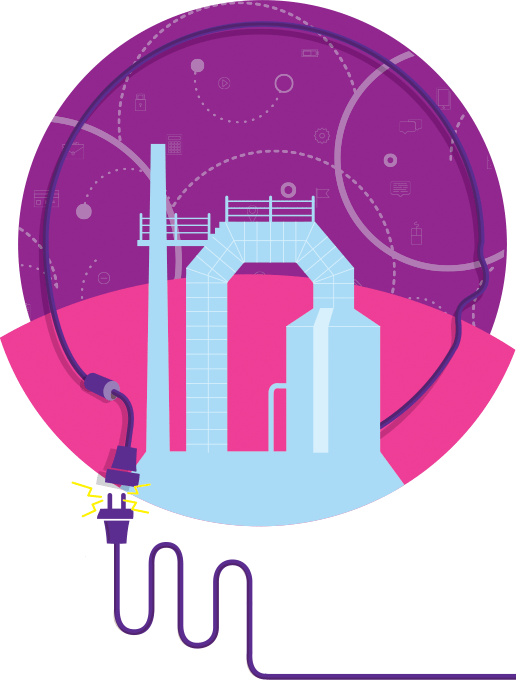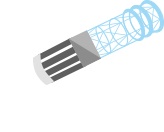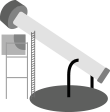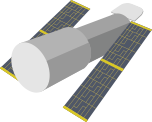The analysis of corporate risks encompasses their identification and classification as well as probability of occurrence, significance in terms of financial impact and image, and degree of control required. Based on this analysis, the Company draws up action plans for each risk, pinpointing any related opportunities. Consequently, risk analysis goes beyond satisfying the demands of the controlling shareholder or those of the market, serving as an efficient strategic planning tool in itself. Through constant monitoring throughout the year, several corporate objectives emerge from the action plans resulting from this analysis. After due approval by the Management Board, the objectives generate goals for career management employees, the latters’ variable compensation being linked to the extent that the goals are achieved. The risks and opportunities are characterized by possible deviations from Tractebel Energia’s Medium Term Financial Plan (PMT). Negative deviations in relation to the PMT are indicative of risks while positive deviations indicate opportunities. GRI G4-14
The principal risks evaluated are:
- Market risk | The supply and demand of electricity can deviate from forecast so affecting energy prices and volumes.
- Regulatory risk | Adverse movements in electricity sector regulations. Historically, the Federal Government exercises a high degree of influence on the Company’s businesses, including overall structure of the industry, the terms and conditions of the power purchasing agreements, which Tractebel Energia is authorized to sign, as well as production levels.
- Taxation risk | Adverse changes in the tax legislation and the actions of the tax authorities.
- Risk arising from economic factors | Alteration in the economic variables such as interest, foreign exchange, commodity prices, economic growth and inflation, thus affecting the Company’s businesses.
- Contractual default risk | Non-compliance with the provisions in the Company’s power purchasing and sale agreements and with the commercialization rules of the Electric Energy Trade Board (CCEE). Another key aspect in this context is the possibility of a concession contract signed with the Federal Government being rescinded unilaterally under unforeseen conditions.
- Socio-environmental risk of the operating plants | Adverse change in the environmental regulations and the activities of organized social movements in relation to the operating plants.
- Risk in the development and installation of new projects | Occurrence of events in the development and installation of projects, resulting in delays to the construction schedule or additional costs for installation or involving plant operations.
- Risk of energy shortages | Shortfall in the physical guarantee of the Company’s plants and in purchased energy. Among the factors influencing the availability of energy are reduced rainfall and fuel shortages at the conventional thermoelectric and the biomass plants. A shortage of primary energy in conjunction with the obligation to deliver assured energy may result in exposure to the short-term market where prices tend to be high.
- Risk of human resources | Labor shortages (own or third party employees) due to the failure to hire and train within a suitable time for meeting the Company’s expansion needs and to replace vacancies on the payroll; increase in costs due to competition for labor in the light of economic growth; strikes and stoppages; and work-related accidents.
- Technological risk of information | Downtime or lack of security for IT resources can negatively affect the Company’s operations and image.
- Major accident risk | Major accidents and disasters due to natural or man-made causes, involving the implementation of projects, the operation of plants and the management of the Company. Payment of substantial costs of restoring the environment and for environmental damage claims may oblige the Company to delay or reallocate investments to other areas, having a negative effect on the businesses.
On the issue of climate change, opportunities arising for Tractebel Energia’s activities are identified in the operation of the existing plants and in the development of new projects. Thus, the Company invests in renewable conventional and non-conventional resources in order to reduce the impact of its operations and also in non-renewable sources to provide the National System Operator (SIN) with a strategic reserve to cover situations involving unexpectedly low rainfall regimes. GRI G4-EC2
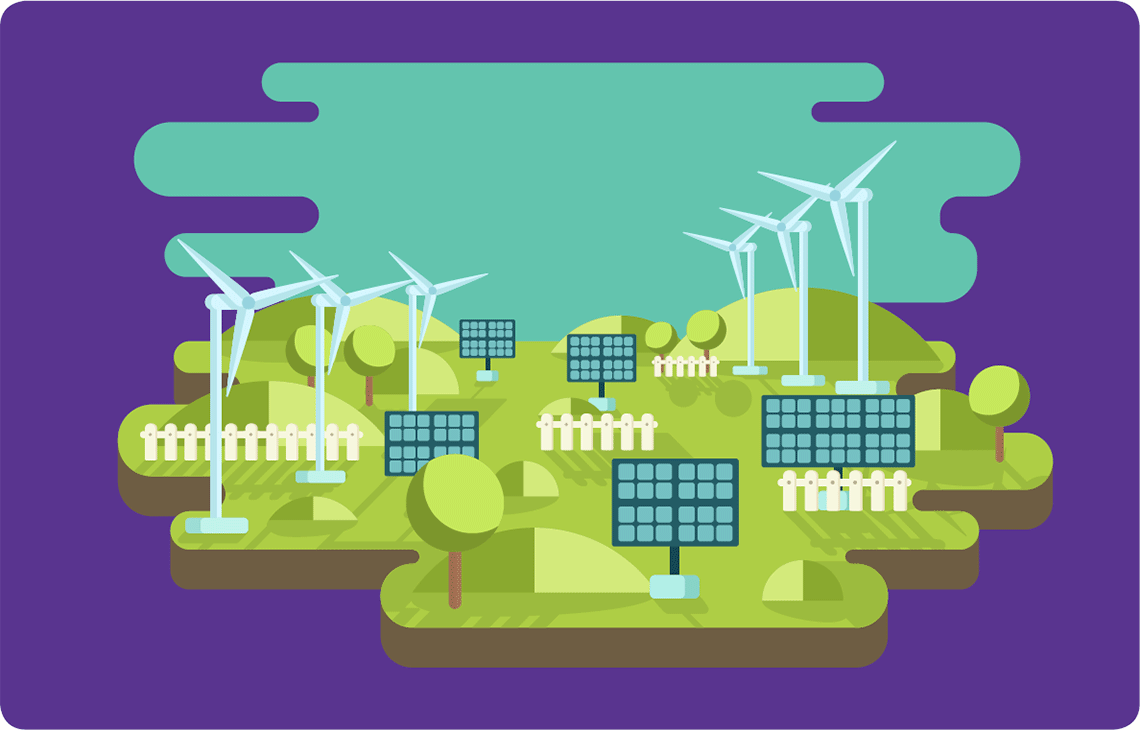
BUSINESS OBJECTIVES GENERATE GOALS FOR CAREER MANAGEMENT EMPLOYEES
| Risk (climate change) |
Driver: physical, regulatory or other kinds of driver |
Impact |
Disclosures on management approach |
Adverse changes in environmental regulations and the activities of
organized social movements |
Regulatory and social |
- Increase in expenses and additional investments
- Fines and penalties
- Projects become unviable
- Pressures of a social nature (demonstrations, press, communities contiguous to the plants/reservoirs, among others)
- Setting targets for reduction or levels of Greenhouse Gas Emissions (GGE)
- Limitation on generation to minimize environmental impacts
- Impossibility of continuing to operate the Company’s plants
|
- Maintenance and renewal of NBR ISO 9001, 14001 and OHSAS 18001 (Occupational Health and Safety) certifications of the 14 certified plants
- Strengthening of the Company’s image through socio-environmental programs
- Raising awareness among employees and partners on the importance of sustainability
- Activity of the Sustainability Committee
- Proactive stance and permanent goal of broadening the Company’s insertion in the sphere of influence of the plants and head office as well as monitoring community requirements adjacent to the locations where Tractebel Energia runs its operations
- Active participation in representative entities
- Monitoring of the legislative and regulatory changes
- Adoption of Tractebel Energia´s Code of Ethics and the Environment Code, ENGIE’s Social Referential, Tractebel’s Sustainable Management Policy and Tractebel’s Policy for
Climate Change
|
|
Major accidents and disasters due to natural and human factors involving the installation of projects, operation of the plants and Company administration
|
Natural disasters |
- Loss of life
- Partial or total interruption of the activities at the affected plant
- Loss of revenue due to downtime
- Exposure of the Company to the short-term energy market where prices tend to be high
- Expenses with the recovery of units and areas, indemnifications, penalties of a social and environmental nature
- Fall in the market capitalization of the Company
- Damage to the image of Company
|
- Greater degree of prevention, integrating forecasts, early warning and restoration in the management of accidents due to natural causes
- More detailed assessment of new projects at the due diligence stage (notably with regard to construction aspects)
- Climatological and hydro-meteorological monitoring
- Monitoring of civil, mechanical and electrical structures
- Work force training and development
- Preparation of Emergency Attendance Plans including the Integrated Environment and Quality Management System (SIG) for each plant as well as the execution of periodic simulations of pre-identified emergency situations
- Civil liability insurance related to personal injury or damage to third parties and to the environment
- Engagement of insurance for assets, loss of profits and energy deficit
|
| *In addition to the listed items, ENGIE and Tractebel Energia have operations classified under UNO’s Clean Development Mechanism (CDM). |
TRACTEBEL PROMOTES THE STRENGTHENING OF ITS INSTITUTIONAL IMAGE THROUGH MANAGEMENT OF BUSINESS RISKS AND OPPORTUNITIES
Tractebel Energia’s projects are prepared in accordance with the regulations of the Brazilian Technical Standards Association (ABNT). In specific cases and/or where these standards do not cover a given situation, the Company adopts internationally recognized regulations and technical standards. Tractebel Energia adheres to a conservative safety factor in its projects, all the dams it operates being classified as low risk according to the National Water Agency’s (ANA) risk matrix and adopted by Aneel.
Tractebel Energia employs the best civil engineering practices in its hydroelectric enterprises whether at the construction stage or in plant operations and maintenance, these including measures to ensure dam safety. The Company incorporates good techniques and criteria for technical quality, safety and cost – established and recommended by the organizations cited above. Tractebel also adopts the standards of other Brazilian and overseas entities such as those of Eletrobrás, the United States Bureau of Reclamation (USBR, responsible for building dams in the west of the country and the second largest hydroelectricity generator in the western United States) and the U.S. Army Corps of Engineers, responsible for investigating, developing and maintaining water and environmental-related resources.
The Company adopts Dam Safety Plans, the methodology of which is in line with the principles of the International Commission on Large Dams and the Brazilian Large Dams Committee as well as Law 12,334 of the Brazilian National Dam Safety Policy approved in 2010 and currently pending regulation by Aneel. The plans encompass all the dams and civil structures associated thereto, covering:
- Instrumentation-based dam safety monitoring and routine monthly inspections by specialist technicians;
- Annual inspections of the dams and civil structures by a multi-disciplinary engineering team with analysis of the data and preparation of inspection reports and reports on performance of the dams and civil constructions related to the hydroelectric plants;
- Execution of programmed annual maintenance during the inspections;
- Emergency Plan of Action (EPA) at each plant and incorporating periodic training with simulations on procedures to be adopted in the event of a dam-related accident or other structure having impacts downstream and/or upstream from the hydroelectric plant; and
- Reservoir Hydrology Monitoring Plan associated with the Dam Safety Plan and the EPA on an integrated basis with the remaining reservoirs on the same river and the rules for operation of spillway structures.
All the Company’s hydroelectric plants are certified according to NBR ISO 9001 and 14001 and NBR OHSAS 18001 standards, undergoing periodic internal and external audits (with Bureau Veritas Certification).
Worthy of note also is that specialists from Tractebel Energia also sit on the Dam Safety Committee, the Brazilian Association for Electric Energy Generating Com-panies (Abrage) as well as participating in periodic debating forums run by the Brazilian Large Dams Committee. Again, ENGIE is represented on the Executive Board of the International Hydropower Association (IHA) which has as its mission to advance sustainable hydropower by building and sharing knowledge on its role in renewable energy systems, freshwater management and climate change solutions (website: www.hydropower.org).
Scenarios and prospects
Tractebel Energia and its parent company adopt a long-term vision. In spite of the current political and economic instability directly affecting the electricity sector as well as energy demand as a whole, the outlook is for Brazil to once more over the medium term demonstrate its capacity for development. In this context, the prospects for ENGIE in Brazil are good. The Group is attentive to the energy transition and potential synergies between the different areas of operation and expanding opportunities for a closer relationship with the end customer.
Aneel data reveals that in 2015, an additional 6,428 MW was added to commercial capacity in Brazil. Of this total, 2,655 MW was wind generated; 2,299 MW from HPPs; 1,356 MW from thermal plants; and 117 MW from Small Hydroelectric Plants (SHPs). By the end of 2015 the country’s installed capacity totaled 140,857 MW.
Installed capacity (as at December 31, 2015)
| Type |
Numbers |
Capacity (kW) |
% |
| Small Hydroelectric Plants (SHP) |
542 |
397,551 |
0.28 |
| Wind Power Plants (WPP) |
316 |
7,632,732 |
5.42 |
| Small Hydroelectric Plants (SHP) |
479 |
4,886,168 |
3.47 |
| Photovoltaic Power Plants (PPP) |
34 |
21,339 |
0.02 |
| Hydroelectric Power Plants (HPP) |
198 |
86,366,478 |
61.31 |
| Thermoelectric Power Plants (TPP) |
2,896 |
39,563,472 |
28.09 |
| Nuclear Power Plants (NPP) |
2 |
1,990,000 |
1.41 |
| Total |
4,467 |
140,857,740 |
100 |
The accompanying graph shows the expansion matrix, excluding plants sold via auction but still with no operating license.
Brazilian Electric Energy Expansion Matrix
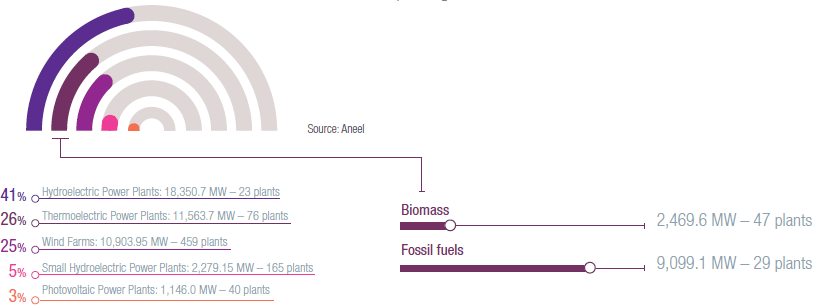
Source: Aneel
Tractebel Energia has expanded generation capacity significantly over recent years to meet the country’s growing energy demand as explained Responsible Expansion of the Generator Complex on section Business Model and Creation of Value.
Electric sector sustainability
As has been the case in the past few years, the Brazilian electricity sector was once more severely impacted by drought in 2015. However, the country’s hydrological potential is undeniable: in 2015, hydro plants accounted for 65% of total installed capacity. Together with this potential, other factors involving hydro generation make a positive contribution: low generation costs and reduced emissions from hydroelectric generation when compared to conventional thermoelectric generation.
Nevertheless, extreme climatic events – frequent in the last few years –, point to the need for changes in planning and operation of the national electricity sector. Changes seen in rainfall patterns have shown that it is not possible to maintain hydraulic sources of energy as the core of the system alone. Rather, it is important to include thermal energy fired for example by natural gas – a source where there are efficient technologies for generating energy with corresponding low levels of atmospheric pollution. Such adjustments in the energy matrix are crucial if a collapse in indigenous energy supplies is to be avoided, a scenario only averted in 2015 thanks to the depressed state of the Brazilian economy and resulting weak energy demand.
The Federal Government has shown itself to be aware of the issue by encouraging investment in projects using other primary energy sources. The principal focus on this front has been wind generation, output from this source growing by 56.9% alone. Brazilian Wind Energy Association data shows that more than 100 plants of this type were commissioned during the course of the year with an investment of about R$19.2 billion. Photovoltaic power generation also reported growth in Brazil during the year. For example, at the 2nd Reserve Auction held in November, 33 projects based on this technology were negotiated – one of them by Tractebel Energia: the Assú V project.
Dedicated to the development of initiatives and actions for increasing the degree of transparency and sustainability in the Brazilian electricity sector, the Acende Brasil Institute (www.acendebrasil.com.br) believes the main challenges to the system’s sustainability and security, are:
- Reconsideration of the concept of constructing hydroelectric power plants
with reservoirs;
- Maintenance of Greenhouse Gas Emissions (GGE) at low levels;
- Discussion on the authorization of private sector participation in nuclear power generation; and
- Evaluation of the use of thermal power sources to guarantee security of supply.
At the global level, the highlight of the year was the 21st Conference of the Parties (COP 21) held in France in December. Some 195 countries were represented in Paris, ENGIE among them. The Acende Brasil Institute sees the core of the agreement on measures to reduce climate change due to GGEs as incorporating energy generation and use. In this context, hydroelectric projects under construction in the Amazon Basin – among them Jirau – are classified as Clean Development Mechanism (CDM) by the United Nations.
The Brazilian commitment at the conference reflected an absolute goal of a 43% reduction in emissions by 2030 in relation to 2005. To reach this target, the Federal Government is to prioritize three sectors: energy, forests and agriculture. The national target is for the energy matrix (electricity, oil and other components) to include a 45% participation in renewable energy – currently its stands at 39.4% –, through increased use of biofuels and an enhanced use of hydraulic, wind, biomass and solar sources to produce electricity. In addition, an envisaged growth in distributed generation also features as an important factor in reducing emissions.
A further challenge for Brazil is to increase the level of energy efficiency. The Government has set a goal of a 10% gain in efficiency in the electricity sector by 2030. Technological advances and management of demand are both promising tendencies in this direction. However, such would imply complex proposals and are contingent on not only investments but also changes in consumption patterns.
Tractebel Photovoltaic Program
In June 2015, the Company launched the Tractebel Voltaic Program as part of its focus on the need to diversify energy sources for generation and the growth in distributed energy. The Program offers the option to Tractebel’s employees of financing the acquisition of residential photovoltaic systems for generating energy with repayment over 120 months. This type of installation qualifies under Aneel’s Electric Energy Compensation System, a mechanism whereby energy supplied by the installed photovoltaic system can be injected into the local distributors’ network and subsequently discounted from the energy acquired from the distributor by the consumption unit or by another pertaining to the same consumer.
Sustainable Development Goals (SDG)
The United Nations Organization (UNO) officially launched the Sustainable Development Goals (SDG) in 2015. Having a horizon out to the year 2030, the 17 SDGs involve a diversified range of topics such as the eradication of poverty, food security and agricultural sustainability, health, education, gender equality and reducing inequality. SDGs also incorporate energy, water and sanitation, sustainable standards of production and consumption, climate change, sustainable cities, protection and sustainable use of the oceans and the terrestrial ecosystems, reinforcing inclusive economic growth, infrastructure and industrialization, governance and the means of implementation. The goals were established after a broad based debate organized by the UNO with the participation of government, non-government organizations, civil society and companies for expanding and enhancing the Millennium Development Goals (MDG), which were supposed to have been achieved by 2015. Tractebel Energia implements several initiatives compatible with the SDGs and has an increasingly close adherence to these objectives among its corporate goals for sustainability in 2016.
THE COMPANY AIMS FOR FULL ALIGNMENT TO SUSTAINABLE DEVELOPMENT GOALS, EXECUTING INITIATIVES COMPATIBLE WITH UNO’S DECLARED OBJECTIVES


